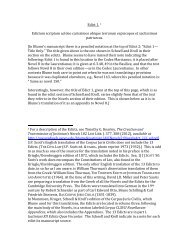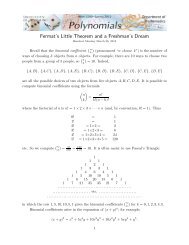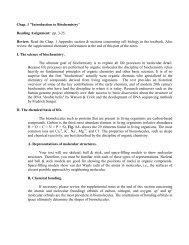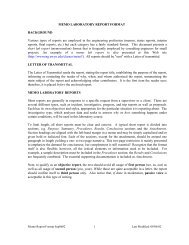Pedometers - University of Wyoming
Pedometers - University of Wyoming
Pedometers - University of Wyoming
Create successful ePaper yourself
Turn your PDF publications into a flip-book with our unique Google optimized e-Paper software.
3<br />
Notes Script<br />
the mode button will transfer and display the following:<br />
If you are coordinating a<br />
distance-based walking<br />
program, explain your<br />
distance conversion. We<br />
recommend using an<br />
average <strong>of</strong> 2,000 steps<br />
per mile for all walkers.<br />
The Conversion Charts<br />
can be shared if you<br />
choose to allow more<br />
specific measurements<br />
and/or if you are<br />
including other forms <strong>of</strong><br />
physical activity in your<br />
program.<br />
Have participants place<br />
the pedometers on their<br />
waist bands. Have safety<br />
pins for those who may<br />
be wearing dresses.<br />
Trouble shoot and assist<br />
participants until all have<br />
a working pedometer<br />
with correct waist<br />
placement.<br />
Steps<br />
This is the most valuable information for you! While there<br />
are many different brands and types <strong>of</strong> pedometers, the step<br />
counting is basically the same. Some count more nonwalking<br />
movements as steps while others count only<br />
deliberate walking steps. What is most important is to<br />
establish a baseline with your pedometer and increase steps.<br />
Whether you start at 500 and increase to 3,000 or whether<br />
you start at 8,000 and increase to 11,000 – the goal is to<br />
move more and more <strong>of</strong>ten.<br />
Miles/Kilometers<br />
This pedometer does not allow you to set stride length. The<br />
default is 24 inches which increases to about 32.4 inches<br />
when you walk at speeds over 2.3 steps per second. That<br />
means that since we take larger steps at faster speeds, the<br />
counter calculates more distance per step.<br />
The goal <strong>of</strong> this program is to increase the number <strong>of</strong> steps<br />
over time. Remember that steps are the most accurate<br />
measurement on this pedometer.<br />
Calories<br />
The calorie calculation is based on a person weighing 120<br />
pounds and does not allow you to input your own weight,<br />
height or age. We recommend focusing on increasing steps<br />
rather than this pedometer’s calories mode which can be<br />
very misleading.<br />
Slide the pedometer vertically onto your waistband and clip<br />
the leash. For dresses or other garments without a<br />
waistband, attach the pedometer to your undergarments, or<br />
pin in on with a safety pin. For most people, the pedometer<br />
works best when placed over the center <strong>of</strong> the thigh.<br />
Walk Test<br />
Hit the reset button so your pedometer reads “0” steps. Walk<br />
100 steps counting each step. Check you pedometer.<br />
If it reads close to 100 steps, then this placement is good. If<br />
not, check placement and try again. You may need to slide<br />
the pedometer closer to your hip.
















